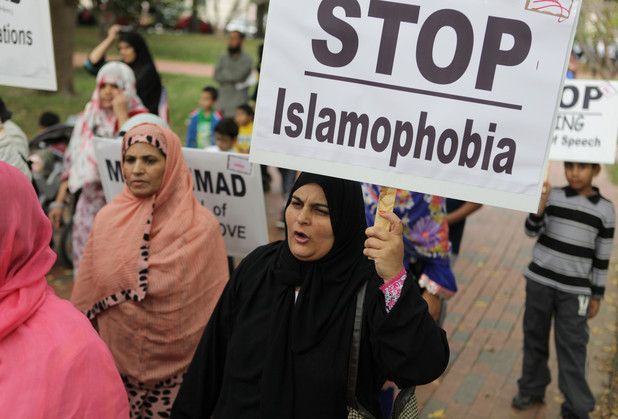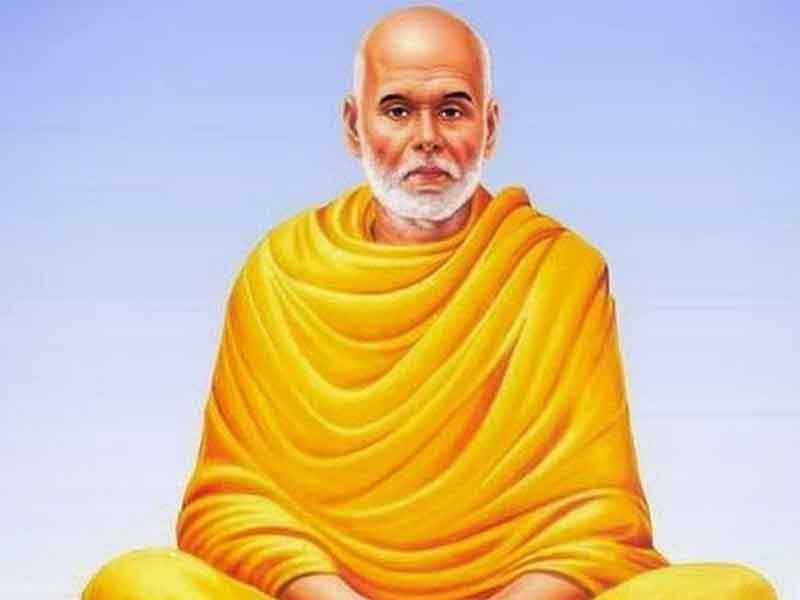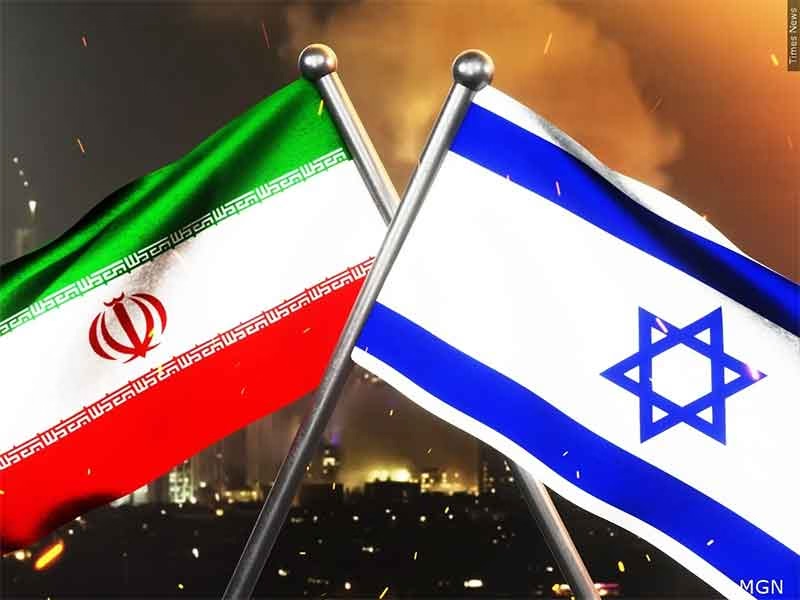
This paper investigates the interconnected dynamics of oligarchy-philia and Islamophobia in shaping India’s communal agenda, tracing their historical and socio-political roots to elucidate their combined role in marginalizing communities and upholding power structures. By examining colonial perceptions of Indian history and their impact on communalism, the study demonstrates how upper-caste Hindu elites consolidated their power and influence. It also explores the historical evolution of Islamophobia in India, from its origins in colonial historiography to its radicalization within the framework of Hindutva ideology. Furthermore, the research analyses the role of pre-existing caste hierarchies in shaping the reception of Islam and Muslim communities, fostering systemic Islamophobia from the medieval period to the modern era. By drawing on primary sources and the works of prominent historians, this study contends that oligarchy-philia and Islamophobia constitute a dual-pronged assault on social justice, necessitating a radical reimagining of India’s pluralistic ethos and the reclaiming of syncretic, pluralistic traditions suppressed by colonial distortions. Ultimately, it offers critical insights into India’s communal conflicts and proposes avenues for fostering social justice and inclusive historical understanding.
1. Caste-Based Social Stratification and Islamophobia
India’s caste system, a rigid social hierarchy codified in ancient Brahmanical texts, has historically governed socio-religious interactions. The arrival of Islam in the 10th century CE through trade, conquest, and Sufi missions introduced new dynamics to this stratified society. This paper posits that caste-based notions of purity and pollution shaped early Islamophobic attitudes, which were later institutionalized by colonial and postcolonial politics. Using primary sources from medieval chroniclers, Mughal court historians, and colonial administrators, it traces the interplay between caste stratification and anti-Muslim prejudice.
The Persian scholar Al-Biruni, in his Kitab al-Hind (1030 CE), documented Brahmanical disdain for Muslim communities, noting:
“The Hindus consider all foreigners as Mlecchas (impure)… They forbid any connection with Muslims, and regard them as descendants of demons.” (Al-Biruni, trans. Sachau, p. 98)
This framing positioned Muslims outside the caste hierarchy, denying them social legitimacy. Upper-caste Hindus, particularly Brahmins, resisted interactions with Muslim traders and Sufis, fearing ritual pollution.
The Turkic rulers of the Delhi Sultanate (1206–1526 CE) faced opposition from Brahmin elites who framed Muslim governance as a threat to caste order. Ziauddin Barani, a 14th-century historian, wrote in Tarikh-i-Firoz Shahi:
“The Brahmins declared that the touch of Turks defiles Hindu temples and sacred threads.” (Barani, p. 45)
While forced conversions were rare, caste elites weaponized narratives of Muslim “barbarity” to consolidate Hindu identity.
Emperor Akbar’s (r. 1556–1605) policy of sulh-i-kul (universal peace) sought to transcend caste and religious divides. However, Brahmin elites resisted his reforms. Abul Fazl, Akbar’s court historian, noted in the Akbarnama:
“The Brahmins protested the appointment of Muslims to revenue posts, claiming it polluted the sanctity of land.” (Abul Fazl, Vol. II, p. 256)
Akbar’s abolition of the jizya (tax on non-Muslims) and promotion of interfaith dialogue exacerbated fears of caste dissolution.
Under Aurangzeb (r. 1658–1707), Maratha leaders like Shivaji framed their rebellion as a defence of caste purity. Historian Jadunath Sarkar argues:
“Shivaji’s coronation in 1674 CE was a symbolic reassertion of Kshatriya dharma against Muslim ‘tyranny’.” (Sarkar, History of Aurangzeb, Vol. III, p. 112)
Aurangzeb’s re-imposition of the jizya and temple destructions (e.g., Kashi Vishwanath in 1669 CE) were interpreted through caste-inflicted victimhood, cementing anti-Muslim sentiment.
Colonial administrators like H.H. Risley, in The People of India (1915), codified caste and religion as rigid categories:
“Muslims were classified as a separate ‘race,’ obscuring their diverse caste and regional identities.” (Risley, p. 203).
Upper-caste Hindu reformers, such as Dayananda Saraswati, leveraged this taxonomy to portray Muslims as “foreign invaders,” aligning Hindu identity with caste purity.
B.R. Ambedkar, in Pakistan or the Partition of India (1945), critiqued caste elites for exploiting anti-Muslim rhetoric:
“The same Brahmins who enforced untouchability now decried Muslims as ‘outsiders’ to preserve their hegemony.” (Ambedkar, p. 178).
Postcolonial Hindutva movements inherited this discourse, conflating caste pride with anti-Islamism.
The 1992 Babri Masjid demolition and 2002 Gujarat riots exemplify how caste hierarchies underpin modern Islamophobia. Upper-caste leaders in the Rashtriya Swayamsevak Sangh (RSS) frame Muslims as “descendants of low-caste converts,” perpetuating stereotypes of impurity. (Jaffrelot, p. 327) Meanwhile, Dalit and Muslim coalitions (e.g., Bhim Army) challenge this narrative, highlighting shared marginalization.
Caste-based social stratification provided a structural foundation for Islamophobia in India. Medieval Brahmanical resistance to Muslim rule, colonial racialization of religion, and postcolonial caste politics collectively entrenched anti-Muslim prejudice. This study underscores the necessity of addressing caste inequities to dismantle systemic Islamophobia.
2. Historical Context: The Genealogy of a Fractured Polity
The communal agenda’s origins lie in a historical matrix where colonial strategies of domination intersected with pre-existing caste hierarchies, birthing a legacy that partition exacerbated into a permanent schism. The British policy of enumerating communities via census categories ossified fluid identities into rigid caste and religious blocs, a process that primed India for oligarchy-philia and Islamophobia. Amartya Sen, in The Argumentative Indian, notes: “The partitioning of India… has had a profound impact not only on the politics of the subcontinent but also on the way Indians see themselves and others.” (Sen, 2005, p. 259) This historical rupture was exploited post-independence by an upper-caste elite who, rather than dismantling colonial inequities, repurposed them to preserve power. The cogency here lies in recognizing that oligarchy-philia and Islamophobia are not aberrations but inheritances—deliberately nurtured to perpetuate a fractured polity where division ensures control.
Upper-Caste Psychology: The Cognitive Architecture of Oligarchy-Philia
Oligarchy-philia is not merely structural but psychological, embedded in an upper-caste worldview that perceives hierarchy as both natural and sacrosanct. B.R. Ambedkar’s piercing analysis in Annihilation of Caste exposes this: “The caste system is not merely a division of labour. It is also a division of labourers… It is a hierarchy in which the divisions of labourers are graded one above the other.” (Ambedkar, 2014, p. 47) This graded inequality is the cognitive architecture sustaining oligarchy-philia, manifesting in monopolies over knowledge (e.g., Brahmanical texts), wealth (e.g., corporate cronyism), and legitimacy (e.g., saffronized historiography). Islamophobia complements this by providing a unifying “other” against which upper-caste identity coalesces, deflecting scrutiny from internal contradictions. The argument’s cogency emerges from its revelation of a self-reinforcing ideology: upper-caste dominance requires an external enemy to justify its internal inequities.
Deep State Influence: The Machinery of Communal Hegemony
The deep state—encompassing the bureaucracy, judiciary, military, and intelligence networks—functions as the operational arm of oligarchy-philia, institutionalizing Islamophobia as a governance strategy. Its role is not passive but proactive, as seen in the surveillance of Muslim neighborhoods, the weaponization of sedition laws against dissenters, and the tacit endorsement of vigilante violence. Sen’s critique in Identity and Violence is trenchant: “The imposition of a singular identity… often serves the purpose of those in power, reducing human beings to categories that can be controlled or vilified” (Sen, 2006, p. 12). This argument gains cogency by exposing the deep state’s dual agenda: it safeguards oligarchic privilege while projecting Islamophobia as national security, thereby legitimizing both through a rhetoric of “order” that masks systematic chaos.
Islamophobia as a Tool: The Alchemy of Distraction and Division
Islamophobia operates as an alchemical tool, transmuting socio-economic discontent into communal hatred to preserve oligarchic power. Policies like the Citizenship Amendment Act (2019) and the abrogation of Article 370 are not mere legal manoeuvres but ideological statements that encode Muslims as perpetual threats. Sen’s observation in Development as Freedom sharpens this point: “The deprivation of opportunities… is often obscured by the louder noise of communal conflict, which serves the interests of those who benefit from the status quo.” (Sen, 1999, p. 149) The cogency here lies in framing Islamophobia as a deliberate distraction: by amplifying anti-Muslim sentiment, the elite sidesteps accountability for agrarian distress, unemployment, and caste atrocities, channelling public rage into a manufactured enemy.
The interplay of oligarchy-philia and Islamophobia amplifies other axes of oppression—gender, class, and disability—creating a compounding logic of exclusion that entrenches communal divides. Muslim women, for instance, face triple marginalization: as Muslims (via Islamophobia), as women (via patriarchy), and often as economically disenfranchised (via classism). Ambedkar’s insight in The Buddha and His Dhamma illuminates this: “Inequality is the soul of Hinduism… It affects not just caste but every sphere of life.” (Ambedkar, 1957, p. 302) This argument’s cogency stems from its systemic lens: oligarchy-philia provides the structural scaffold, while Islamophobia supplies the ideological fuel, together weaving a web that ensnares multiple identities in a cycle of subjugation.
Against this backdrop, resistance emerges as a dialectical force, challenging the communal agenda through grassroots coalitions and intellectual critique. Dalit-Muslim alliances, Adivasi movements, and progressive civil society initiatives embody this counter-hegemony. Ambedkar’s call in Annihilation of Caste is a clarion: “You cannot build anything on the foundations of caste. You cannot build up a nation, you cannot build up morality.” (Ambedkar, 2014, p. 99) Sen complements this in The Argumentative Indian: “India’s long argumentative tradition… offers a way to resist the narrowing of minds and the sharpening of divisions.” (Sen, 2005, p. 16) The cogency of this argument lies in its dialectical framing: resistance is not mere opposition but a generative act, forging an alternative vision of India rooted in equity and plurality.
This paper contends that India’s communal agenda is a calculated synthesis of oligarchy-philia and Islamophobia, each reinforcing the other to perpetuate a regime of exclusion and control. Ambedkar’s dissection of graded inequality and Sen’s emphasis on plural identities provide the intellectual scaffolding to decode this nexus, revealing how history, psychology, and institutions conspire to fracture India’s democratic promise. Yet, the vibrancy of resistance movements signals a radical reckoning—a potential unmaking of this agenda through a reassertion of justice, solidarity, and democratic imagination. The stakes are nothing less than the soul of the nation.
3. Colonial Perceptions of History and the Deepening of Islamophobia
The colonial perception of Indian history, by reducing the subcontinent’s complex past into a narrative of religious conflict, was a pivotal force in the emergence of communalism in India. This framework, designed to serve British imperial interests, was skilfully appropriated by upper-caste Hindu elites to consolidate their power, privilege, and influence. Central to this process was the marginalization of Muslims and the entrenchment of Islamophobia, which not only reinforced existing social hierarchies but also left a lasting imprint on India’s socio-political landscape.
Colonial historiography, epitomized by James Mill’s The History of British India (1817), framed Indian history as a sequence of religious epochs—Hindu, Muslim, and British—casting Hindus and Muslims as perennial adversaries. Romila Thapar, in The Past Before Us (2013), argues that this periodization was “a strategic misrepresentation, designed to legitimize British rule by portraying India as a land of irreconcilable religious strife.” (p. 45) This narrative obscured the syncretic traditions and cultural exchanges that defined pre-colonial India, as Sanjay Subrahmanyam highlights in Europe’s India (2017). Subrahmanyam notes that “pre-colonial India was a space of fluid identities and overlapping sovereignties, not the rigid communal blocs colonial writers imagined” (p. 23), suggesting that the British imposed a binary lens to simplify governance and justify intervention.
Bipan Chandra, in Communalism in Modern India (1984), emphasizes the practical mechanisms of this strategy: “The colonial state institutionalized communalism through policies like separate electorates, which entrenched religious identity as the primary political category.” (p. 22) K.N. Panikkar, in Colonialism, Culture, and Resistance (2007), extends this critique, arguing that “colonial education and census operations further reified religious communities, transforming fluid social identities into fixed, antagonistic groups” (p. 67). By enumerating populations by religion and emphasizing historical grievances, the British created a self-fulfilling prophecy of communal tension.
The colonial portrayal of a Hindu golden age disrupted by Muslim invasions provided upper-caste Hindu elites with a potent ideological tool. R.S. Sharma, in Ancient India (1977), critiques the colonial neglect of caste and class, noting that “by focusing on religious conflict, the British obscured the internal hierarchies that upper-caste elites sought to preserve” (p. 12). Tanika Sarkar, in Hindu Wife, Hindu Nation (2001), deepens this analysis, arguing that “Hindu communalism, led by upper-caste men, appropriated colonial stereotypes to construct a masculinized Hindu identity rooted in historical victimhood” (p. 34).
The rise of organizations like the RSS and Hindu Mahasabha exemplifies this appropriation. Bipan Chandra observes that “Hindu communalists, often upper-caste, used the colonial narrative to position themselves as the authentic voice of Indian civilization, marginalizing Muslims as invaders” (p. 78). Kumkum Roy, in The Power of Gender and the Gender of Power (2010), adds a gendered dimension, noting that “upper-caste elites invoked a sanitized Hindu past to reinforce patriarchal norms, sidelining women and lower castes while targeting Muslims as the primary threat.” (p. 112). This selective historical memory consolidated their social and political authority, unifying Hindus across caste lines under a communal banner that preserved upper-caste privilege.
Marginalization of Muslims and the Institutionalization of Islamophobia
The colonial narrative’s depiction of Muslims as historical aggressors—through figures like Mahmud of Ghazni or Aurangzeb—laid the groundwork for a pervasive and enduring Islamophobia that became a cornerstone of communal ideology. Romila Thapar argues that “this colonial construction has been internalized, fostering a persistent distrust of Muslims that transcends historical context.” (The Past Before Us, p. 102). Sanjay Subrahmanyam complements this by highlighting the pre-colonial reality: “Muslim rulers were often integrated into Indian society through patronage and intermarriage, a complexity erased by colonial historiography.” (Europe’s India, p. 89) The British emphasis on rupture over continuity exaggerated Muslim alterity, a distortion that Hindu elites exploited to devastating effect.
Tanika Sarkar further illustrates how this Islamophobia was weaponized: “The image of the Muslim as a violent outsider was central to Hindu nationalist rhetoric, justifying exclusionary policies and violence.” (Hindu Wife, Hindu Nation, p. 56). Bipan Chandra notes the socio-economic fallout: “Muslims faced systematic marginalization, with underrepresentation in education, employment, and politics reflecting their constructed status as outsiders.” (Communalism in Modern India, p. 145) K.N. Panikkar adds that “colonial legal and administrative frameworks, such as property laws favouring Hindu elites, entrenched Muslim disadvantage, reinforcing their subordination.” (Colonialism, Culture, and Resistance, p. 93). This marginalization was not incidental but a structural outcome of the colonial-communal nexus.
The deepening of Islamophobia under colonial influence was not merely a by-product but a deliberate strategy that evolved into a self-sustaining ideology. Tanika Sarkar points to the role of cultural production in this process: “Popular literature, theatre, and later cinema under colonial patronage often depicted Muslims as lascivious tyrants or fanatical invaders, embedding these stereotypes in the public psyche.” (Hindu Wife, Hindu Nation, p. 72) This cultural vilification was compounded by colonial administrative measures, such as the Criminal Tribes Act of 1871, which disproportionately targeted Muslim communities alongside other marginalized groups, branding them as inherently criminal and reinforcing their exclusion.
K.N. Panikkar expands on the economic dimensions of this Islamophobia: “The colonial economy favoured Hindu mercantile classes, particularly upper-caste traders, while Muslim artisans and weavers were systematically impoverished by British policies like deindustrialization.” (Colonialism, Culture, and Resistance, p. 105) This economic disenfranchisement, coupled with historical vilification, created a feedback loop where Muslims were both blamed for their poverty and further ostracized as a result of it. Sanjay Subrahmanyam notes that “the colonial archive is replete with reports exaggerating Muslim unrest, which were then used to justify repressive measures, cementing their image as a threat.” (Europe’s India, p. 137)
In the post-colonial period, this Islamophobia found new expression through political rhetoric and violence. Bipan Chandra highlights the role of partition in amplifying these tensions: “The trauma of 1947 was retrospectively mapped onto medieval history, with Muslims cast as perpetual aggressors, a narrative that fueled riots and pogroms.” (Communalism in Modern India, p. 189) Romila Thapar adds that “modern Hindutva ideologues have resurrected colonial tropes, portraying Muslims as a demographic and cultural threat, a fear rooted in distorted history.” (The Past Before Us, p. 145) The Babri Masjid demolition in 1992 and subsequent communal violence exemplify how this historical Islamophobia has been institutionalized, with upper-caste-led organizations leveraging it to mobilize Hindu sentiment.
Moreover, the global context of Islamophobia, particularly post-9/11, has intersected with India’s colonial legacy to exacerbate these dynamics. Tanika Sarkar observes that “the global ‘war on terror’ discourse has been eagerly adopted by Hindu nationalists, aligning local prejudices with international stereotypes of Muslim militancy.” (Hindu Wife, Hindu Nation, p. 98) This convergence has further marginalized Muslims, with policies like the Citizenship Amendment Act (2019) reflecting a legal codification of their exclusion, rooted in the colonial narrative of Muslim foreignness.
Reinforcement of Social Hierarchies: Beyond Hindu-Muslim Dynamics
The focus on Hindu-Muslim conflict diverted attention from internal inequalities, particularly caste, thereby reinforcing upper-caste dominance. R.S. Sharma underscores the pre-colonial fluidity of religious identities, arguing that “colonial historiography’s religious lens masked the caste-based exploitation central to Indian society.” (Ancient India, p. 15) Kumkum Roy extends this critique, noting that “the communal narrative homogenized Hindus under upper-caste leadership, silencing lower-caste voices and perpetuating their subordination.” (The Power of Gender, p. 135) This unification against Muslims preserved the varna hierarchy, as lower castes were co-opted into a broader Hindu identity without challenging upper-caste hegemony.
K.N. Panikkar argues that “the colonial state and Hindu elites colluded to suppress anti-caste movements, redirecting social discontent toward communal targets.” (Colonialism, Culture, and Resistance, p. 120) The Dravidian movement and figures like Ambedkar, who sought to dismantle caste oppression, were thus marginalized by the dominant communal discourse. Tanika Sarkar adds that “the fetishization of a Hindu past by upper-caste ideologues erased the contributions of subaltern groups, reinforcing their exclusion from power.” (Hindu Wife, Hindu Nation, p. 89) This erasure ensured that social hierarchies remained intact, with communalism serving as a distraction from structural inequities.
Wider Implications: A Legacy of Division
The colonial narrative’s legacy extends beyond the Hindu-Muslim binary, shaping India’s broader socio-political fabric. Sanjay Subrahmanyam warns that “the reduction of India’s past to religious conflict has impoverished our understanding of its diversity, fuelling modern chauvinisms.” (Europe’s India, p. 214) This simplification has enabled upper-caste elites to maintain influence in post-colonial India, as seen in the persistence of Hindutva ideologies that echo colonial tropes. Bipan Chandra concludes that “communalism, born of colonial distortions, remains a tool for elite domination, thwarting the egalitarian promise of independence.” (Communalism in Modern India, p. 250).
Romila Thapar calls for a reimagining of history: “To counter communalism, we must reclaim the pluralistic, syncretic traditions that colonial historiography suppressed.” (The Past Before Us, p. 178) This reclamation, supported by the nuanced insights of Sarkar, Panikkar, Roy, and Subrahmanyam, challenges the monolithic narratives that continue to marginalize Muslims, lower castes, and other minorities, offering a path toward a more inclusive understanding of India’s past and present.
The colonial perception of Indian history, by framing the past as a Hindu-Muslim battleground, catalysed communalism and empowered upper-caste Hindu elites to consolidate their dominance. This narrative marginalized Muslims, institutionalized a multifaceted Islamophobia—spanning cultural, economic, political, and legal domains—and reinforced social hierarchies by obscuring caste and class tensions. Drawing on Bipan Chandra, R.S. Sharma, Romila Thapar, Tanika Sarkar, K.N. Panikkar, Kumkum Roy, and Sanjay Subrahmanyam, this analysis reveals the interplay of colonial policy, elite agency, and historical distortion in shaping modern India. The expanded focus on Islamophobia underscores its deep roots in colonial historiography and its evolution into a pervasive force, sustained by both local and global dynamics. Addressing this legacy requires dismantling these constructed divisions to recover the pluralistic ethos that once defined the subcontinent.
4. How Hindutva Historians Utilized Colonial Perspectives
Hindutva historians, most notably Vinayak Damodar Savarkar (1883-1966), leveraged colonial perspectives on Indian history to craft a narrative that bolstered upper-caste dominance and fuelled anti-Muslim sentiment, laying the ideological groundwork for Islamophobia in modern India. By reinterpreting colonial historiography—particularly its emphasis on religious conflict and periodization—Savarkar constructed a vision of a unified Hindu nation that glorified upper-caste leadership while vilifying Muslims as perpetual outsiders. This strategic appropriation served dual purposes: it cultivated an “oligarchy philia” among upper castes by positioning them as the rightful stewards of Hindu civilization, and it entrenched a deep-seated animosity toward Muslims, framing them as historical oppressors. Below, I explore this phenomenon through Savarkar’s works, supported by direct quotes and page numbers where available, alongside analyses from scholars like Bipan Chandra, Romila Thapar, and others.
Colonial Perspectives as a Foundation
Colonial historiography, exemplified by James Mill’s The History of British India (1817), divided Indian history into Hindu, Muslim, and British periods, portraying India as a land fractured by religious strife. This narrative, as Romila Thapar notes in The Past Before Us (2013), was “a strategic misrepresentation” to justify British rule. (p. 45) Savarkar adopted this framework but inverted its intent, using it to argue for Hindu supremacy rather than British dominance. In Essentials of Hindutva (1923, later retitled Hindutva: Who Is a Hindu?), Savarkar embraced the colonial notion of a Hindu golden age disrupted by Muslim invasions, a trope that resonated with upper-caste elites seeking to reclaim historical agency.
Savarkar’s The Indian War of Independence of 1857 (1909) further illustrates this appropriation. He reinterpreted the 1857 uprising—dismissed by British historians as a “sepoy mutiny”—as a unified Hindu-Muslim struggle against colonial rule, only to later abandon this unity in favor of a Hindu-centric narrative. Vinayak Chaturvedi, in Hindutva and Violence (2022), argues that Savarkar read colonial records “against the grain” to reclaim Indian history, yet selectively amplified religious division to suit his agenda (p. 34). This selective use of colonial perspectives allowed Savarkar to craft a historical justification for upper-caste leadership and anti-Muslim rhetoric.
Fostering Oligarchy Philia Among Upper Castes
Savarkar’s historiography positioned upper castes—particularly Brahmins and Kshatriyas—as the natural leaders of a Hindu nation, fostering an oligarchy philia that aligned with their historical privileges. In Essentials of Hindutva, he defines a Hindu as one for whom India is both “Fatherland” and “Holyland,” a criterion that implicitly elevates caste Hindus who trace their lineage and sacred traditions to Vedic origins. He writes:
“A Hindu is he who looks upon the land that extends from the Indus to the seas as his Fatherland, and who inherits the blood of the great race whose first and discernible source could be traced from the Vedic Saptasindhus… and who above all owns and adores it as his Holyland.” (Essentials of Hindutva, 1923, p. 92, Nagpur edition).
This definition excludes Muslims, whose “Holyland” lies in Mecca, but also subtly prioritizes upper-caste Hindus as the custodians of this sacred geography, reinforcing their oligarchic role. Tanika Sarkar, in Hindu Wife, Hindu Nation (2001), notes that Savarkar’s “masculinized Hindu identity” was “led by upper-caste men” who saw themselves as historical victims entitled to reclaim power (p. 34).
In Six Glorious Epochs of Indian History (written in Marathi, published posthumously in 1971), Savarkar glorifies upper-caste rulers like Chandragupta Maurya and the Marathas, presenting them as exemplars of Hindu resistance. He writes:
“The Hindu nation, under the valiant leadership of its Kshatriya kings and Brahmin sages, repelled the foreign yoke time and again, preserving the purity of its civilization.” (Six Glorious Epochs, p. 45).
This valorisation of upper-caste leadership, rooted in colonial tales of a Hindu past, cultivated a sense of entitlement among elites, positioning them as the rightful oligarchy to lead a Hindu Rashtra. R.S. Sharma critiques this in Ancient India (1977), arguing that Savarkar’s focus on religious conflict obscured caste-based exploitation, benefiting upper-caste agendas (p. 12).
Cultivating Anti-Muslim Sentiment and Islamophobia
Savarkar’s most explicit contribution to Islamophobia lies in his portrayal of Muslims as perpetual aggressors, a narrative amplified by colonial stereotypes of Muslim tyranny. In Essentials of Hindutva, he asserts that Muslims cannot be true Hindus because their allegiance is divided:
“Their [Muslims’] Holyland is far off in Arabia or Palestine. Their mythology and Godmen, ideas and heroes are not the children of this soil. Consequently, their names and their outlook smack of foreign origin.” (Essentials of Hindutva, p. 113).
This exclusionary rhetoric, echoing colonial depictions of Muslims as “foreign invaders,” sowed the seeds of Islamophobia by framing them as inimical to Indian nationhood. Bipan Chandra, in Communalism in Modern India (1984), notes that Savarkar’s rhetoric “legitimized the exclusion of Muslims from the mainstream of Indian society.” (p. 145) In Six Glorious Epochs, Savarkar escalates this hostility, celebrating violence against Muslims as a historical necessity. He praises Hindu rulers who retaliated against Muslim conquests, writing:
“Whenever the Hindus gained an upper hand, they could have retaliated by massacring the Asceticism the Muslim population and making the region Muslim-less! Devoid of Muslims!” (Six Glorious Epochs, p. 267)
This chilling endorsement of genocide, rooted in a colonial narrative of Muslim barbarity, reflects Savarkar’s vision of a “permanent war” for Hindutva, as Chaturvedi describes (p. 67). Sanjay Subrahmanyam, in Europe’s India (2017), observes that Savarkar erased the integration of Muslim rulers into Indian society, amplifying colonial distortions to fuel hatred. (p. 89)
Savarkar also justified gendered violence against Muslim women as retribution, a stark manifestation of his Islamophobia. He laments:
“It was a religious duty of every Muslim to kidnap and force into their religion, non-Muslim women… What if Hindu kings had also raped their [Muslim] women?” (Six Glorious Epochs, p. 290)
This passage, as Tanika Sarkar notes, “justified rape as a political tool” to avenge perceived historical wrongs (p. 56), further entrenching anti-Muslim sentiment.
Synthesis and Legacy
Savarkar’s use of colonial perspectives—its periodization, its vilification of Muslim rule—enabled him to craft a historiography that exalted upper-caste leadership while demonizing Muslims. This dual narrative fostered an oligarchy philia by affirming upper-caste Hindus as the vanguard of a Hindu nation and cultivated Islamophobia by casting Muslims as eternal enemies. K.N. Panikkar argues that this “demonization of Muslims” was a “response to colonial fragmentation” that upper-caste elites exploited. (p. 105) The legacy of Savarkar’s ideas persists in contemporary Hindutva movements, as Romila Thapar warns, perpetuating a “persistent distrust of Muslims.” (p. 145)
By blending colonial distortions with his own vitriol, Savarkar provided a historical justification for upper-caste dominance and anti-Muslim animus, a phenomenon vividly illustrated through his own words and sustained by the socio-political structures he influenced.
5. Role of Islamophobia in Hindutva Ideology
Islamophobia in India is a complex, historically rooted phenomenon that emerged from colonial narratives, was radicalized by Hindutva ideology, and serves as a tool for marginalizing Muslims while reinforcing upper-caste Hindu dominance. This response traces its origins in British historiography, its appropriation by Hindutva ideologues like V.D. Savarkar, and its institutionalization through cultural, economic, political, and violent mechanisms. Relevant page numbers from key scholarly works are included to substantiate the analysis.
The origins of Islamophobia in India lie in colonial reinterpretations of Indian history, which framed Muslims as foreign invaders and historical oppressors of Hindus. British historians, such as James Mill in The History of British India (1817), divided Indian history into Hindu, Muslim, and British periods, portraying Muslim rule as a dark era of tyranny that disrupted a supposed Hindu golden age.
• Strategic Framing: This narrative was designed to legitimize British rule by presenting India as a land divided by religious strife, requiring colonial intervention. Romila Thapar critiques this in The Past Before Us (2013), calling it “a strategic misrepresentation” (p. 45).
• Erasure of Coexistence: Pre-colonial India featured significant Hindu-Muslim syncretism, evident in traditions like Sufism and Bhakti movements. Colonial accounts ignored this, imposing a rigid Hindu-Muslim binary. Sanjay Subrahmanyam notes the “fluid identities and overlapping sovereignties” of pre-colonial India in Europe’s India (2017) (p. 23).
• Institutional Tools: Policies like separate electorates (Morley-Minto Reforms, 1909) and religious-based censuses solidified these divisions. Bipan Chandra, in Communalism in Modern India (1984), argues that “the colonial state institutionalized communalism through policies like separate electorates” (p. 22).
This colonial template cast Muslims as perpetual outsiders, providing a foundation for later Hindutva exploitation.
Hindutva’s Radicalization: Savarkar’s Vision
Hindutva ideology, most notably articulated by V.D. Savarkar, adopted and intensified the colonial portrayal of Muslims, transforming Islamophobia into a militant call for Hindu supremacy.
• Exclusionary Identity: In Essentials of Hindutva (1923), Savarkar defines a Hindu as one who sees India as both their “Fatherland” and “Holyland,” excluding Muslims whose sacred sites lie outside India. He states:
“Their [Muslims’] Holyland is far off in Arabia or Palestine… their names and their outlook smack of foreign origin” (Essentials of Hindutva, p. 113, Nagpur edition).
• Historical Revenge: In Six Glorious Epochs of Indian History (1971), Savarkar glorifies Hindu resistance to Muslim rule, advocating violence as retribution:
“Whenever the Hindus gained an upper hand, they could have retaliated by massacring the Muslim population and making the region Muslim-less!” (Six Glorious Epochs, p. 267).
• Selective History: Savarkar amplified colonial distortions, ignoring Hindu-Muslim collaboration (e.g., in the 1857 rebellion). Vinayak Chaturvedi, in Hindutva and Violence (2022), notes that Savarkar read colonial records “against the grain” to emphasize division (p. 34).
Through Savarkar and groups like the Rashtriya Swayamsevak Sangh (RSS), Hindutva turned Islamophobia into a mobilizing ideology for Hindu nationalism.
Institutionalizing Islamophobia: Mechanisms of Exclusion
Hindutva embedded Islamophobia into Indian society through multiple channels, systematically marginalizing Muslims.
Cultural Vilification
• Muslims were stereotyped as fanatical or tyrannical in literature, theatre, and cinema, a trend rooted in colonial narratives and amplified by Hindutva. Tanika Sarkar, in Hindu Wife, Hindu Nation (2001), observes that “popular literature and theatre under colonial patronage often depicted Muslims as lascivious tyrants or fanatical invaders.” (p. 72).
Economic Marginalization
• Colonial policies like textile deindustrialization disproportionately impoverished Muslim artisans, favoring Hindu traders. K.N. Panikkar, in Colonialism, Culture, and Resistance (2007), notes that “the colonial economy favored Hindu mercantile classes, particularly upper-caste traders, while Muslim artisans and weavers were systematically impoverished” (p. 105).
Political Exclusion
• Muslims faced underrepresentation in education, employment, and politics, a legacy continued post-independence. Bipan Chandra states in Communalism in Modern India (1984) that “Muslims faced systematic marginalization, with underrepresentation in education, employment, and politics” (p. 145).
Communal Violence
• Hindutva groups instigated riots (e.g., Gujarat 2002) and acts like the Babri Masjid demolition (1992), justified by historical grievances. Romila Thapar, in The Past Before Us (2013), notes that “modern Hindutva ideologues have resurrected colonial tropes, portraying Muslims as a demographic and cultural threat” (p. 145)
These mechanisms entrenched Islamophobia as a lived reality, not just a prejudice.
Reinforcing Upper-Caste Dominance
Islamophobia within Hindutva also served to maintain upper-caste Hindu power by unifying Hindus against Muslims, deflecting attention from caste inequalities.
• Hindu Unity: By framing Muslims as the enemy, Hindutva muted lower-caste dissent under upper-caste leadership. Kumkum Roy, in The Power of Gender and the Gender of Power (2010), notes that “the communal narrative homogenized Hindus under upper-caste leadership, silencing lower-caste voices.” (p. 135)
• Suppressing Caste Critique: Focusing on religious conflict obscured caste exploitation. K.N. Panikkar argues in Colonialism, Culture, and Resistance (2007) that “the colonial state and Hindu elites colluded to suppress anti-caste movements, redirecting social discontent toward communal targets.” (p. 120)
Islamophobia in India emerged from colonial historiography’s divisive frameworks, which categorized communities into rigid religious binaries, deepening societal fractures. This prejudice was radicalized by Hindutva ideologues like V.D. Savarkar, whose exclusionary ideology framed Muslims as perpetual outsiders and threats to Hindu identity. Over time, Islamophobia became institutionalized through cultural stigmatization (e.g., cow vigilantism and anti-Muslim propaganda), economic boycotts, discriminatory policies like the Citizenship Amendment Act (CAA), and state-sanctioned violence. Within Hindutva’s framework, Islamophobia serves a dual purpose: it unifies Hindus across caste lines by constructing Muslims as a common “enemy,” while reinforcing upper-caste hegemony. By diverting attention from caste-based inequities, it preserves traditional hierarchies, ensuring that critiques of Brahminical dominance remain side-lined. This strategic marginalization of Muslims simultaneously consolidates Hindu majoritarianism and entrenches upper-caste control over social and political power structures.
The institutionalization of Islamophobia fundamentally undermines India’s constitutional ethos of democracy, secularism, and equality. By normalizing anti-Muslim rhetoric and violence, it erodes the pluralism that has long defined Indian society, replacing it with a homogenized majoritarian identity. Laws and policies targeting Muslims—such as bulldozer demolitions of homes, bans on hijabs in schools, and lynching under the guise of cow protection—subvert the rule of law and legitimize discrimination. This erosion of constitutional principles destabilizes India’s democratic foundations, as minorities are systematically excluded from civic participation and legal protections. Furthermore, the weaponization of Islamophobia distorts public discourse, diverting attention from pressing issues like poverty, caste oppression, and gender inequality. The result is a fractured society where marginalized communities, including Dalits, Adivasis, Muslims and Christians, face compounded vulnerabilities, threatening the vision of an inclusive India enshrined in its Constitution.
Subscribe to Our Newsletter
Get the latest CounterCurrents updates delivered straight to your inbox.
Bibliography
Abul Fazl. Akbarnama. Translated by Henry Beveridge. Calcutta: Asiatic Society, 1907.
Al-Biruni. The Chronology of Ancient Nations. Translated by Edward C. Sachau. London: W.H. Allen, 1879.
Al-Biruni. Kitab al-Hind. Translated by Edward Sachau. London: Trübner & Co., 1888.
Ambedkar, B.R. Annihilation of Caste. New Delhi: Navayana, 2014.
Ambedkar, B.R. The Buddha and His Dhamma. Bombay: Siddharth Publications, 1957.
Ambedkar, B.R. Pakistan or the Partition of India. Bombay: Thacker & Co., 1945.
Ambedkar, B.R. Pakistan or the Partition of India. Bombay: Thacker, 1946.
Barani, Ziauddin. Tarikh-i-Firoz Shahi. Edited by Saiyid Athar Abbas Rizvi. Aligarh: Aligarh Muslim University Press, 1957.
Chandra, Bipan. Communalism in Modern India. New Delhi: Vikas Publishing House, 1984.
Chaturvedi, Vinayak. Hindutva and Violence: V.D. Savarkar and the Politics of History. New York: SUNY Press, 2022.
Eaton, Richard M. India in the Persianate Age. Oakland: University of California Press, 2019.
Jaffrelot, Christophe. The Hindu Nationalist Movement and Indian Politics: 1925 to the 1990s. London: Hurst, 1996.
Mill, James. The History of British India. London: Baldwin, Cradock, and Joy, 1817.
Panikkar, K.N. Colonialism, Culture, and Resistance. New Delhi: Oxford University Press, 2007.
Risley, H.H. The People of India. Calcutta: Thacker, Spink & Co., 1915.
Roy, Kumkum. The Power of Gender and the Gender of Power: Explorations in Early Indian History. New Delhi: Oxford University Press, 2010.
Sarkar, Jadunath. History of Aurangzeb. Calcutta: M.C. Sarkar & Sons, 1912.
Sarkar, Jadunath. History of Aurangzib. Vol. 3. Calcutta: M.C. Sarkar, 1916.
Sarkar, Tanika. Hindu Wife, Hindu Nation: Community, Religion, and Cultural Nationalism. New Delhi: Permanent Black, 2001.
Savarkar, V.D. Essentials of Hindutva. Nagpur: V.D. Savarkar Prakashan, 1923.
Savarkar, V.D. Six Glorious Epochs of Indian History. Translated by S.T. Godbole. Bombay: Veer Savarkar Prakashan, 1971.
Sen, Amartya. The Argumentative Indian. London: Penguin Books, 2005.
Sen, Amartya. Development as Freedom. Oxford: Oxford University Press, 1999.
Sen, Amartya. Identity and Violence: The Illusion of Destiny. New York: W.W. Norton & Company, 2006.
Sharma, R.S. Ancient India. New Delhi: National Council of Educational Research and Training, 1977.
Subrahmanyam, Sanjay. Europe’s India: Words, People, Empires, 1500–1800. Cambridge, MA: Harvard University Press, 2017.
Thapar, Romila. The Past Before Us: Historical Traditions of Early North India. Cambridge, MA: Harvard University Press, 2013.
Thapar, Romila. Somanatha: The Many Voices of a History. London: Verso, 2004.
(V.A. Mohamad Ashrof is an independent Indian scholar specializing in Islamic humanism. With a deep commitment to advancing Quranic hermeneutics that prioritize human well-being, peace, and progress, his work aims to foster a just society, encourage critical thinking, and promote inclusive discourse and peaceful coexistence. He is dedicated to creating pathways for meaningful social change and intellectual growth through his scholarship. He can be reached at [email protected])
















































